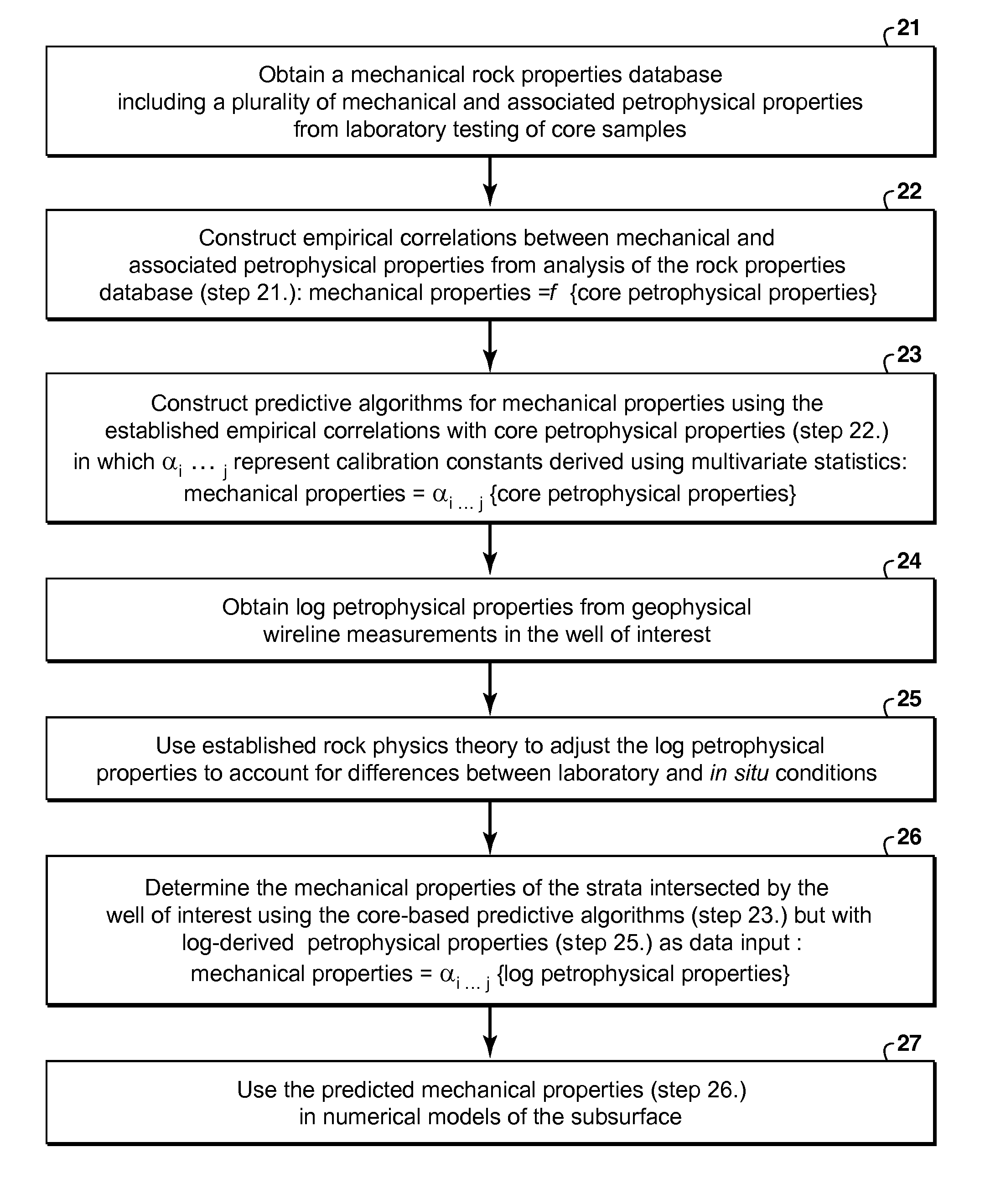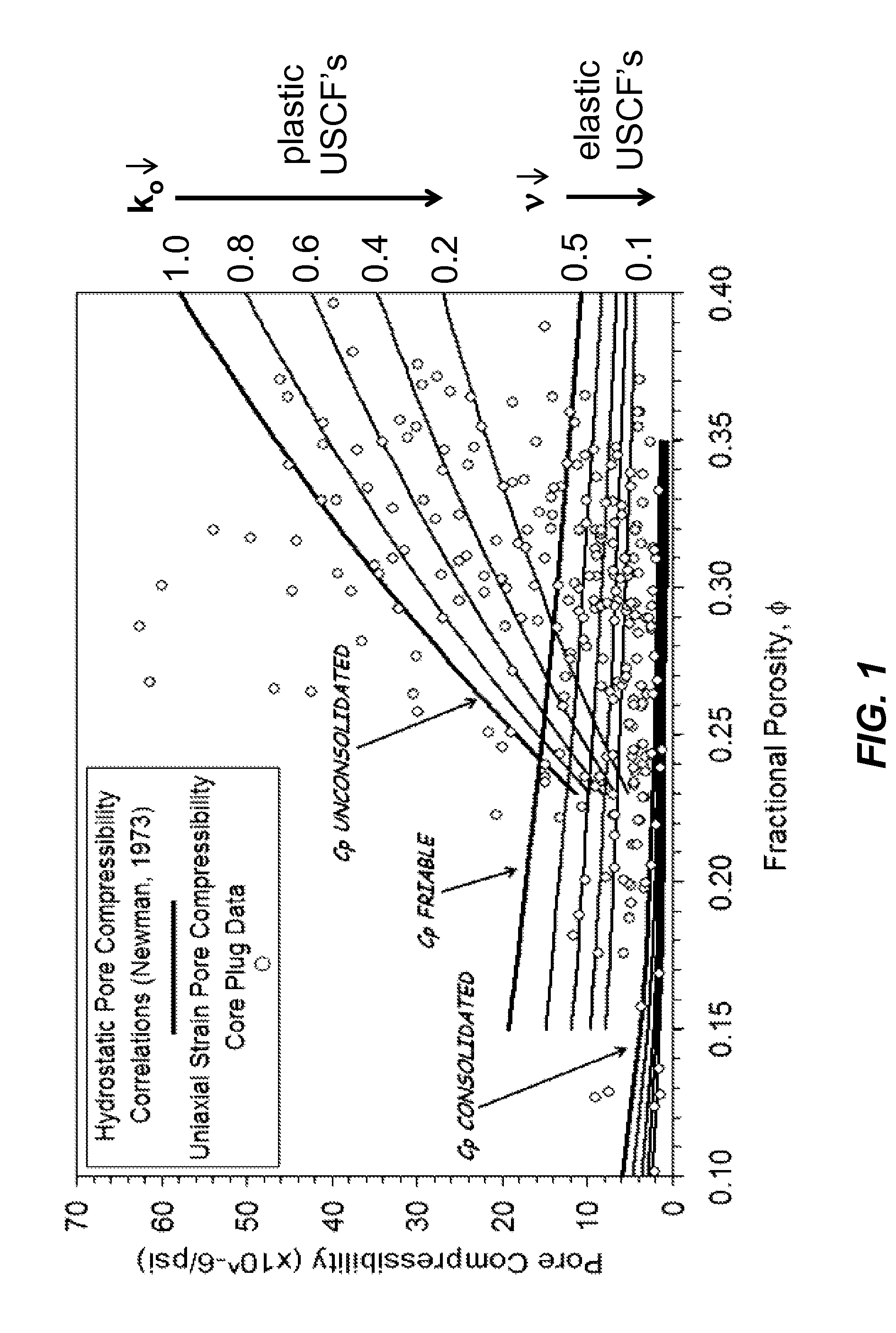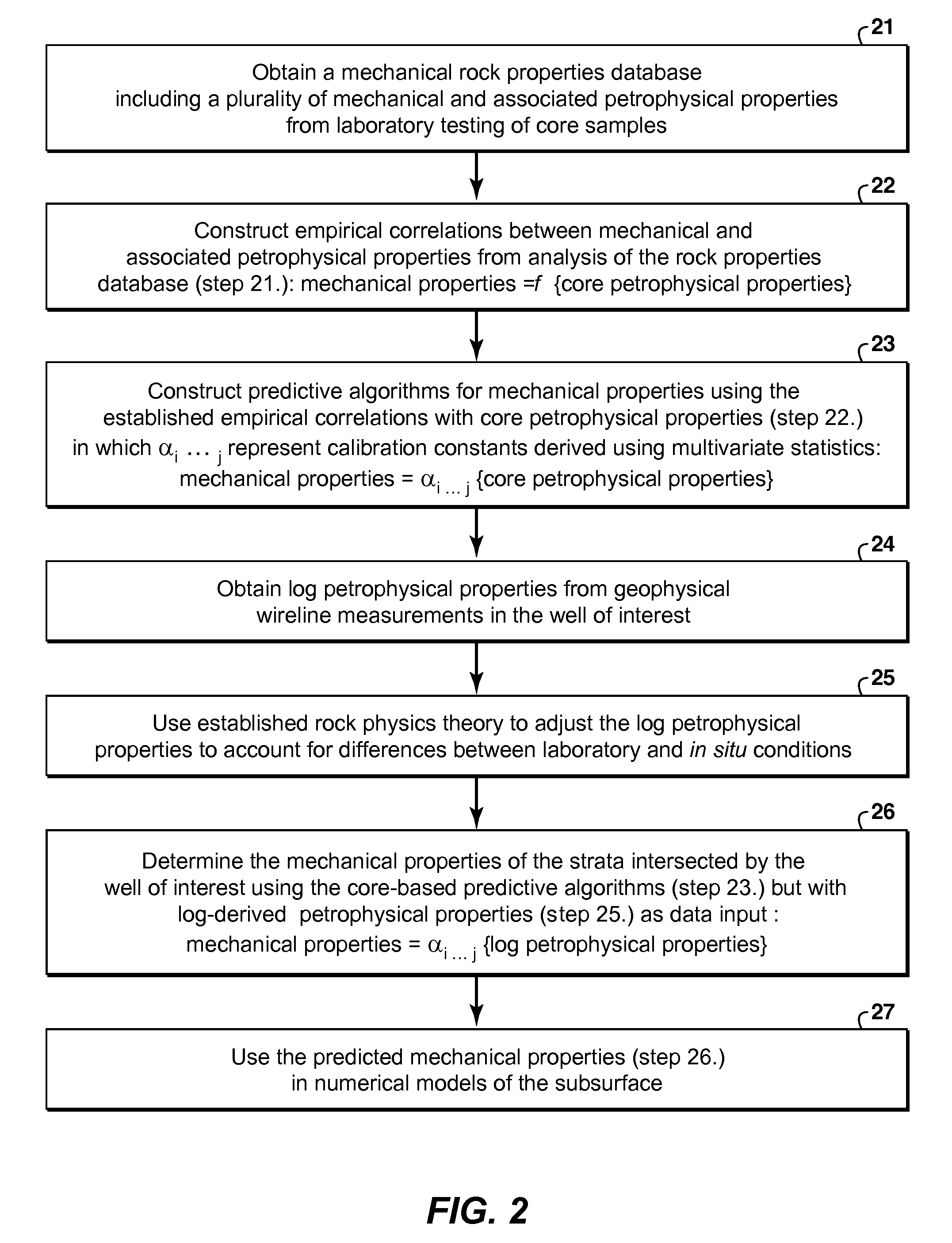Reservoir pressure and temperature changes associated with oilfield operations can modify the
in situ stress field, causing deformation (induced strains) within the stressed rock units.
However, mechanical properties can only be directly quantified from
laboratory testing of recovered core from the lithologic units of interest.
While much effort has been expended in designing sophisticated experimental techniques for measuring rock mechanical properties, subsurface model results will be severely limited if no core is available from the specific rock strata.
Further, in many cases core measurements will be highly limited and thus discontinuous, biased towards mechanically stronger intervals due to core recovery issues and almost always absent from non-reservoir
overburden and underburden lithologies.
While
estimation of elastic rock properties has practical geomechanical application in, for example, the modeling of hydraulic fracture containment (e.g. Simonson et al., 1978) knowledge of effective elastic moduli alone is insufficient to describe “plastic” (large-strain deformation) in which stresses approach the failure strength of the rock.
However, while the above micromechanical models are selectively capable of qualitatively reproducing many of the phenomenological features associated with elastic-brittle rock deformation both pre- and post-failure (e.g. onset of the brittle-ductile transition, relationships between localized damage and hydraulic flow) collectively they are impractical for the purposes of predicting large-strain plastic rock mechanical properties with sufficient accuracy for
petroleum geomechanics modeling purposes.
Additional limitations might also include: (i) computational intensity; (ii) lack of sufficient petrographic characterization of required microstructural input parameters; (iii) necessity of core measurements for model calibration purposes; (iv) difficulties associated with upscaling results.
That is, the same combination of petrographic parameters that make a particular
lithology relatively more compliant (less stiff) and thus slower with respect to the speed of
acoustic wave propagation, also decrease its strength (load-
bearing capacity) relative to surrounding lithologies.
While some empirical models work reasonably well for a particular geographic region or specific
lithology, considerable scatter in predicted strength indicates that none are sufficiently generic to fit all available data.
It is believed that there are no existing techniques that can predict a range of plastic mechanical properties in a diversity of lithologies without recourse to obtaining at least one
core sample from the strata of interest for
laboratory testing.
As noted by Fjaer, significant limitations associated with the above technique include: (i) sizeable differences between static (core-derived) and dynamic (log-derived) elastic moduli can result in considerable error when using static correlations to predict strength from elastic moduli calculated from sonic velocities; (ii) as compressional velocity is dependent on applied stress and
fluid saturation in addition to rock
microstructure, strength predicted using the above technique should be field dependent, that is should vary with subsurface depth and reservoir environment for a constant lithology; (iii) since the lowest strength in the mechanical properties
database is ˜30 MPa such that the data represent relatively high strength rocks, it is unclear how the empirical correlation will extrapolate to low strength formations; (iv) a constant Mohr-
Coulomb friction angle of 30 degrees is assumed in the above analysis, whereas laboratory measured friction angles in equivalent sandstone-to-shale lithologies is known to vary from ˜5 degrees to ˜50 degrees.
Raaen et al. contend that, while differences between static and dynamic moduli are partly attributable to fluid effects, the above plastic micromechanisms requiring
large strain amplitude for activation account for the majority of static versus dynamic mismatch, as
small amplitude dynamic loading resulting from acoustic excitation cannot trigger such mechanisms.
As the main focus of this technique is to provide sand strength
estimation for quantifying solids production in flowing wells, an obvious limitation of the model is an inability to predict the strength of argillaceous, shaly rocks which can often contribute to
wellbore stability issues.
The technique has limitations when used to predict strength in “mixed lithologies” such as shaly sandstones or sandy shales, as it relies on a weighted average of the pure end member components which can lead to significant predictive uncertainty.
Limitations associated with this method are as follows: (i) the method involves obtaining measurements of one or more static drained elastoplastic properties from the sedimentary
system of interest (ii) the micromechanical model involves diverse microstructural parameters (such as particle
coordination number, grain-size and grain-to-grain friction coefficients) which are difficult to characterize without sampling the strata of interest; (iii) the micromechanical model may not be applicable to diverse lithologies such as carbonates and shales.
For example, ignoring UPVC in
material balance calculations can result in over
estimation of oil-in-place and prediction of excessive volumes of water influx (Hall, 1953).
As fluid properties are generally well constrained, uncertainty in UPVC directly contributes to inaccuracies in
material balance and
simulation results (Carlson, 2003).
Pressure decline above the bubblepoint can be very rapid, such that a substantial amount of recovery can occur prior to obtaining core and measuring mechanical rock properties.
Further, discrete core measurements are rarely obtained in sufficient number to overcome between-sample data variability.
A limitation of this technique is apparent from FIG. 1 in that, without knowing the generic lithotype (consolidated versus friable versus unconsolidated sand) and the appropriate USCF,
porosity does not yield a reliable prediction of UPVC.
While Khatchikian's methodology is valid for estimating essentially elastic UPVC at reservoir
stress conditions (as sonic logs measure formation stiffness resulting from low-amplitude, high-frequency elastic deformation) it is incapable of predicting compressibility associated with any significant component of large-strain plastic deformation.
Limitations of this technique are as follows: (i) as the method requires simulated loading of virtual core samples representing each strata of interest, it is impractical for wells penetrating lithologically diverse strata; (ii) propagation of error associated with micromechanical modeling of static mechanical properties could result in
significant error in derived UPVC's; (iii) ideally the micromechanical model should be calibrated against
laboratory testing of recovered core; and (iv) knowledge of the
in situ stress and pore pressure fields may not be practical, particularly in an exploration setting.
 Login to View More
Login to View More  Login to View More
Login to View More 


